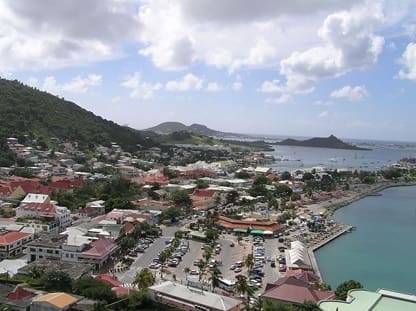INTRODUCTION
Saint Martin is an island in the northeast Caribbean Sea, approximately 300 km east of Puerto Rico. The southern Dutch part comprises Sint Maarten and is one of four constituent countries that form the Kingdom of the Netherlands. English is the most commonly spoken language along with a local dialect.
The island has a tropical savanna climate with a dry season from January to April and a rainy season from August to December. The island’s sparking blue, crystal-like waters ripple under the bight Caribbean sun, making Saint Martin the quintessential destination for gorgeous sights, landscapes, and relaxing destinations. The economy draws increasingly on tourism, as the government encourages exploitation of the island’s most valuable natural resources—the clean beaches and pleasant climate.
HISTORY
The island was sighted on November 11, 1493, by Christopher Columbus, who named it in honour of St. Martin of Tours, whose feast day it was. Valued for its natural lakes of salt, a scarce commodity in Europe, the island changed between Dutch and Spanish hands several times. The Dutch (southern) part of the island, Sint Maarten, has coastal lagoons, salt pans, and sand spits. It became a part of the Dutch West Indies in 1828, and it was one of the original territories of the Netherlands Antilles federation that was established in 1954 and dissolved in 2010. Sint Maarten is now an autonomous state within the Kingdom of the Netherlands. St. Martin’s Dutch side is known for its festive nightlife, beaches, jewellery, drinks made with native rum-based guava berry liquors, and casinos. The island’s French side is known for its nude beaches, clothes, shopping and French and Indian Caribbean cuisine.
COSTUME
The traditional costume of Saint Martin is no different than Dominica and Saint Lucia. A Five-piece Clothing called Madras was originally derived from the Wob Dwyiet. It is a grand robe worn by the earlier French settlers, and this garment is also recognised as a national dress of the country. The madras is the traditional dress of the women and girls. The cloth, known as the madras, is named after its place of origin, Madras, India.
The costume comprises a white cotton or poplin blouse, known in French Creole finished with Broderie Anglaise and red ribbons. The second item is an ankle length skirt, again trimmed with lace and red ribbons. It has two gathers towards the lower end of the garment. The third item is the shorter outer skirt, made of Madras material, to which the costume is named.
 The Madras material is used again in the fourth item, the head piece, known as the Tête en l’air or tèt anlè; a square or rectangular piece of cloth worn over the forehead and folded to display varying numbers of peaks. The head scarf can be tied in a ceremonial fashion or can be worn to show the availability of the woman in courtship, depending on the number of peaks tied into it. One peak represents that the woman is single, two that she is married, three that she is widowed or divorced, and four that she is available to any who tries.
The Madras material is used again in the fourth item, the head piece, known as the Tête en l’air or tèt anlè; a square or rectangular piece of cloth worn over the forehead and folded to display varying numbers of peaks. The head scarf can be tied in a ceremonial fashion or can be worn to show the availability of the woman in courtship, depending on the number of peaks tied into it. One peak represents that the woman is single, two that she is married, three that she is widowed or divorced, and four that she is available to any who tries.
The final item is a triangular silk scarf, foulard, pinned to the left shoulder, its apex at the end of the elbow and tucked into the waist of the skirt. It is also worn when dancing the Quadrille, which has been adopted by the country as the national dance and on the Independence Day.
References
https://www.britannica.com/place/Saint-Martin-island-West-Indies
http://www.stmartinisland.org/

